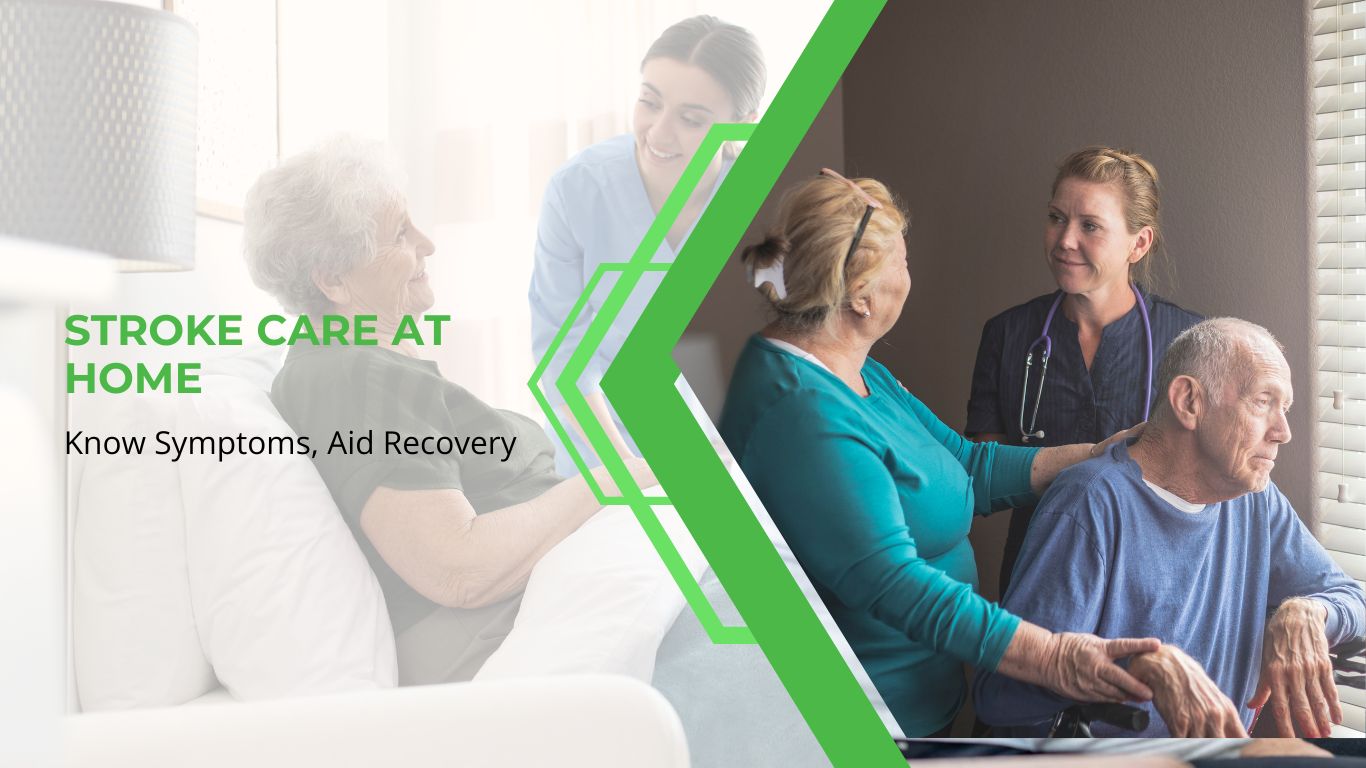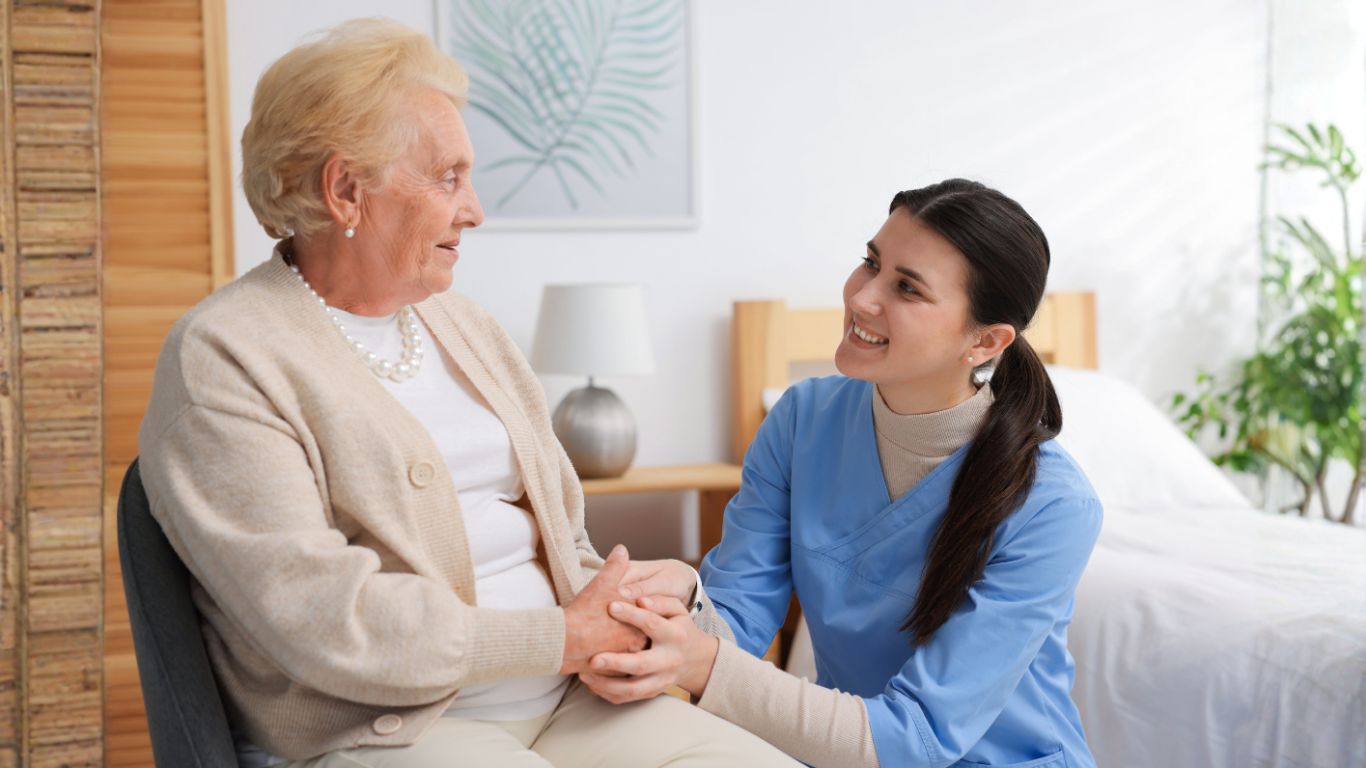Introduction
A stroke is a serious medical emergency that can cause significant changes in a person’s life. After a stroke, the road to recovery can be long and challenging. The good news is that many stroke survivors can make remarkable progress with the right stroke care and support, especially when the recovery process happens at home. Stroke home care services play a critical role in ensuring that patients receive the best possible care in a familiar, comfortable environment.
In this article, we’ll explore the symptoms of a stroke, how to manage recovery at home, and the importance of professional care. If you or a loved one is recovering from a stroke, this guide will help you understand stroke after care, support services, and treatment options.
What is Stroke Care?
Stroke care refers to the medical and emotional support provided to individuals who have suffered a stroke. The treatment of stroke typically involves immediate emergency care to restore blood flow to the brain, followed by rehabilitation efforts. Stroke patients often experience physical, cognitive, and emotional challenges, so post stroke care focuses on rehabilitation to restore as much function as possible.
Stroke home care services allow stroke patients to recover at home, receiving personalized assistance with their daily activities, rehabilitation, and medical needs. These services can be essential in promoting better recovery, particularly when hospital care is no longer required.
Recognizing Stroke Symptoms
Before delving into the stroke after care, it’s crucial to understand the symptoms of a stroke, as quick recognition can be lifesaving. A stroke typically happens when the blood supply to part of the brain is interrupted, causing brain cells to die. This can lead to a sudden loss of function.
Common Stroke Symptoms:
- Sudden numbness or weakness, particularly on one side of the body.
- Confusion or trouble speaking: Difficulty understanding or forming speech.
- Vision problems: Blurred vision or loss of vision in one or both eyes.
- Severe headache: A sudden, severe headache with no known cause.
- Difficulty walking: Loss of balance or coordination, dizziness.
If you notice any of these symptoms in yourself or someone else, it’s essential to seek medical attention immediately. Time is critical in treating a stroke, and quick intervention can help reduce the extent of brain damage.
The Importance of Care After a Stroke
After a stroke, a patient’s recovery is highly individualized. Factors like the severity of the stroke, the type of stroke, and the overall health of the patient all contribute to the pace and nature of recovery. After a stroke care focuses on helping patients regain independence and manage any physical, cognitive, or emotional challenges that may arise.
The Role of Stroke Home Care Services
One of the most effective ways to support a stroke patient after discharge is through stroke home care services. These services provide essential support in the comfort of the patient’s home, enabling them to regain some level of independence while recovering. Trained caregivers assist with tasks such as medication management, personal care, physical therapy, and emotional support.
For many stroke survivors, being in a familiar environment can aid recovery. It can also alleviate stress and enhance the mental wellbeing of both the patient and their family members.
The Stages of Stroke Recovery
Stroke recovery can occur in several stages. Each stage focuses on regaining specific skills, such as mobility, speech, or cognition.
Initial Recovery Stage
The first few weeks after a stroke are crucial for the patient’s initial recovery. During this stage, the main goal is to stabilize the patient and begin addressing immediate medical needs. This is when rehabilitation starts, which may include physical therapy to help regain strength and mobility.
Middle Recovery Stage
The middle recovery stage can last for months or even years. Rehabilitation continues in earnest, and many patients benefit from ongoing post-stroke care. Patients often undergo speech therapy and occupational therapy to improve communication and daily functioning.
During this period, stroke home care services may involve helping with day-to-day tasks, such as preparing meals, assisting with hygiene, and supporting mobility.
Long-Term Recovery Stage
Some patients may require ongoing assistance long after the initial stroke. This stage focuses on managing any lasting disabilities and continuing to improve quality of life. Family caregivers and professional care providers play a vital role in this phase by providing personal care services, managing medication, and ensuring the patient’s wellbeing.
Supporting Stroke Recovery at Home
How to Treat a Stroke Patient at Home
Treating a stroke patient at home involves a holistic approach to care. Support can range from physical therapy to emotional care. Here’s what you need to know about supporting stroke recovery:
- Physical therapy: Working with a therapist to improve movement, strength, and coordination is crucial.
- Speech therapy: If the stroke has affected speech or swallowing, speech therapy will help the patient regain communication abilities.
- Occupational therapy: This helps the patient develop the skills necessary for daily activities, like cooking, dressing, and cleaning.
- Emotional support: After a stroke, patients may experience depression or anxiety. Emotional support is an essential part of stroke services, helping the patient stay positive and motivated during recovery.
Post Stroke Care: How to Provide the Right Support
Post stroke care involves addressing the physical and emotional needs of the patient. It includes regular monitoring of health, ensuring proper nutrition, and providing a safe environment for recovery.
Creating a Safe Environment
Home safety is essential for stroke after care. Make sure the home is accessible for patients with mobility issues. Some tips for improving safety include:
- Installing grab bars in bathrooms.
- Removing tripping hazards.
- Using adaptive equipment like wheelchairs or walkers.
Meal Preparation and Nutrition
A well-balanced diet can significantly impact stroke recovery. Stroke after care involves helping patients maintain a healthy diet rich in nutrients that support brain health and overall wellbeing. Caregivers can assist with meal preparation, ensuring that the patient receives the necessary nutrition for recovery.
Medication Management
Proper medication management is essential in post stroke care. Many stroke patients need medications to prevent another stroke, manage high blood pressure, or treat complications. Caregivers must help with medication reminders and ensure that prescriptions are filled and taken as directed.
What Type of Doctor Treats Strokes?
Strokes require specialized care from healthcare professionals. The type of doctor who treats strokes is typically a neurologist, as they specialize in the brain and nervous system. A vascular neurologist may also be involved, especially in cases of stroke caused by blood vessel issues.
In addition to neurologists, stroke after care may involve a range of specialists, including physical therapists, occupational therapists, speech-language pathologists, and psychologists, to ensure that the patient receives comprehensive care.
The Role of Live-in Care Services
For those who need more extensive support during recovery, live-in care services can provide a solution. With live-in care, a caregiver is available 24/7 to assist with daily activities, offer emotional support, and help with physical rehabilitation. This level of care is particularly beneficial for patients who are recovering from a severe stroke and need constant assistance.
Emotional Well-Being After a Stroke
Stroke recovery isn’t just about physical recovery; it’s also about emotional wellbeing. Stroke survivors often face depression, anxiety, and frustration due to the changes in their abilities. Stroke home care services can help provide emotional support by offering companionship, reducing isolation, and encouraging the patient to stay engaged in their recovery.
Family support is equally important. In many cases, family members become the primary caregivers, so ensuring they have the resources and knowledge to manage the physical and emotional challenges of stroke care is vital.
Conclusion
Caring for someone after a stroke requires patience, understanding, and the right kind of support. From recognizing the symptoms of a stroke to providing stroke home care services for ongoing recovery, the process can be challenging but also incredibly rewarding. With proper stroke after care, individuals can regain independence and live fulfilling lives.
By enlisting the help of professional caregivers through stroke home care services, you ensure that your loved one receives the necessary treatment and support for recovery. If you or a loved one is navigating the path to recovery after a stroke, consider exploring professional services like live-in care services and personal care services to ensure comprehensive care.
Take the Next Step in Recovery with True Homecare
Don’t navigate stroke recovery alone. With professional stroke home care services from True Homecare, your loved one can receive compassionate, expert care tailored to their unique needs. Whether you’re looking for support with post stroke care, live-in care services, or daily rehabilitation assistance, we’re here to help.
Contact us today and discover how our dedicated caregivers can make a lasting difference in your stroke recovery journey.
FAQs
1. What is the first thing to do after a stroke?
The first thing to do is seek emergency medical care. Time is critical, so getting immediate treatment can help reduce the extent of brain damage.
2. How can I support a stroke patient at home?
Support a stroke patient by assisting with physical therapy, meal preparation, medication management, and providing emotional support.
3. What type of doctor treats strokes?
A neurologist is the primary doctor who treats strokes. For more specialized care, a vascular neurologist may also be involved.
4. What are stroke home care services?
Stroke home care services provide in-home support, including assistance with daily tasks, rehabilitation, and emotional support for stroke patients.
5. How long does it take to recover from a stroke?
Recovery time varies depending on the severity of the stroke and the patient’s health. Some patients may take months or even years to fully recover.



